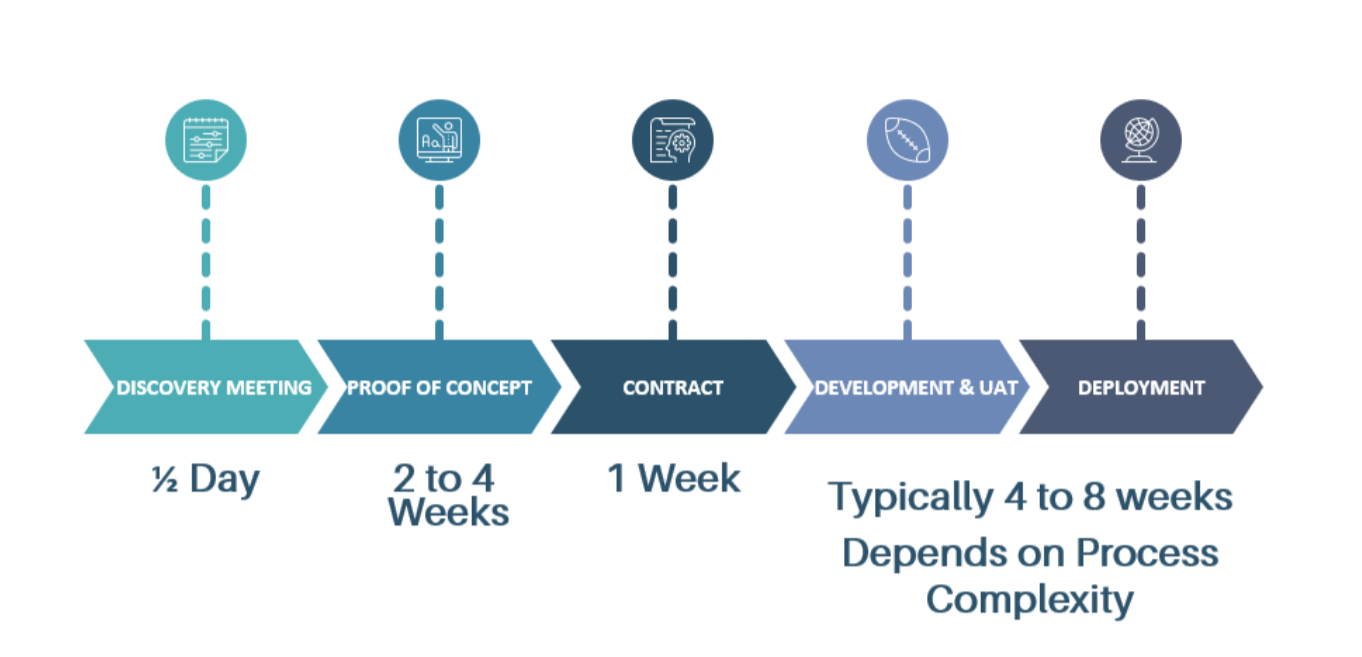Criteria for RPA
An opportunity does not have to satisfy all of these criteria, but this will help identify areas for exploration

Process standardisation
Process need to be defined in terms of a set of unambiguous business rules.

Rules based exceptions
Simpler processes with little exception in delivery.

Manual work involved
Process should have little automation support today and large amounts of manual work.

Process stability
Process should be well defined and stable.

Number of systems used
Process should typically require employees to access one or multiple independent systems.

Transaction frequency & volume
Process should have high number of transactions which are labour intensive, time-consuming, or has high-cost impact errors.

Prone to error
Manual activities in the process today result in errors due to human operator mistakes.

Structured data
Data needs to be structured, not unstructured (e.g.pdf/email)*
* Today, RPA is unable to directly manage unstructured datasets, requiring cognitive technology to first extract and create structured data using advanced capabilities such as optical character recognition (OCR) and natural language recognition (NLR). RPA can then be applied.




























